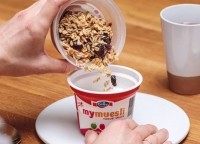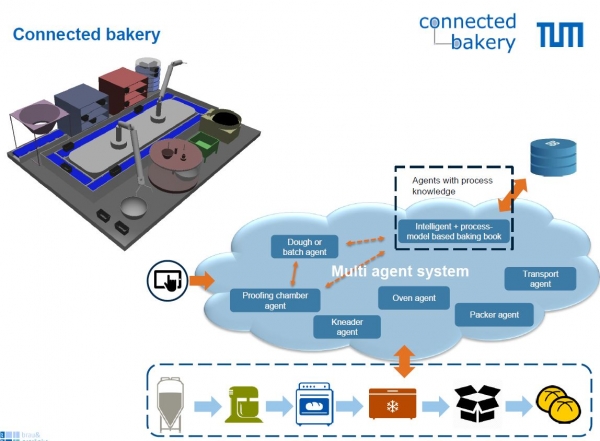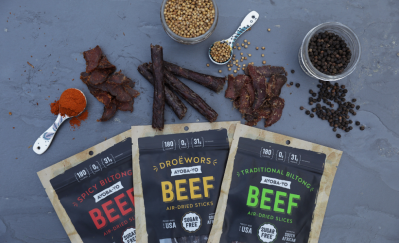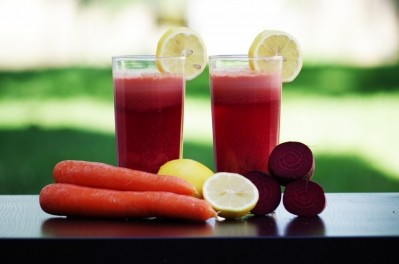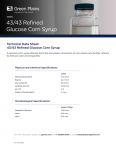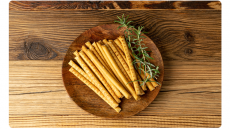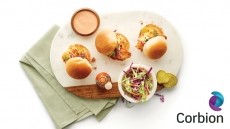‘Trends in Innovative Bakery’ Anuga FoodTec
3D printed bread, vertical cereal farms & medicinal bread; Welcome to Industry 4.0
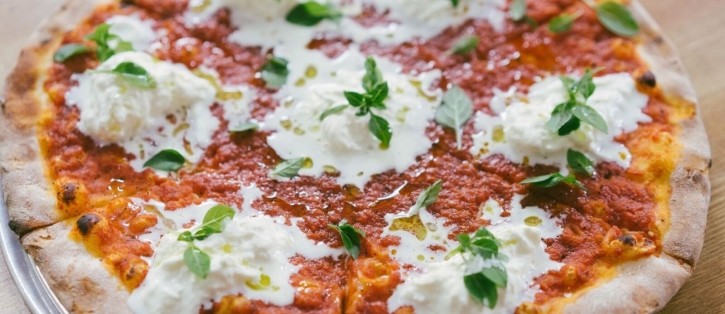
Speaking at Anuga FoodTec in Cologne, Germany, earlier this year, Dr Christoph Verheyen, TUM, said Mega Trends are connectivity, globalization, know-how culture, new work, health, individuality, urbanization, safety, mobility, silver society, gender shift and neo-ecology.
Rethinking automation
In his presentation ‘Innovations for bakery production: from scientific approaches to applications’, Verheyen said connectivity, ecology, health and individualization/personalization will affect the organization and production of bakeries in the future, because next to raw material innovations, the processes or production of healthy and high quality products, as well as their automation has ‘to be overthought’.
“At TUM, several approaches are being conducted, developed and planned to fulfil this transformation process for the bakery industry,” he said.
“Current projects include optimizing green-label technologies to enable high quality (gluten-free) products and new texturing devices are being applied, elucidating the fundamental mechanistic of material-process relations to define specific textures of the products.
“In this context, an innovative concept to personalize and improve the concept of bread production is 3D printing.”
He said trends in bakery will incorporate sourcing bread locally with foreign fusions such as German sausage combined with ketchup from the US and curry from India. Consumers will take a keen interest in looking to the basics; ie reduced fat, reduced sugar, clean-label and convenience food.
“Functional and comfort food like chocolate will have to fulfil a number of requirements for consumers such as traditional, modern, natural, functional, regional, alternative protein sources, healthy, create new textures and target group oriented areas for personalized and free-from,” added Verheyen.
Focusing on the four topics of healthy foods, digitalization, individuality and connectivity, the professor added medical and super foods will become the healthy alternatives in the bread and cereal market.
One example he said is the EU-funded HealthBread project led by Jan Willem van der Kamp from TNO in the Netherlands who won BakeryandSnacks’ ‘Personality of the Year’ in 2014.
The concept was to make bread that feels and tastes like white bread but is as healthy as wholemeal bread with special fibre-rich wheat flours and better absorption of key minerals like iron and zinc by the body.
TNO worked in a consortium with the VTT research centre of Finland, Het Nederlands Bakkerij Centrum (Foundation Dutch Bakery Center), two ingredients suppliers and 13 SMEs, including eight bakeries that developed their own HealthBread loaves adjusted to local taste.
The bread comprises components of wheat grain, water and salt and is 100% natural.
After the project ended, six HealthBread bakeries started selling the bread and the concept will launch in Germany, Austria, Italy, the Netherlands, France, Turkey and the US.
Verheyen said the focus was to improve the healthy character of bread, to purify the ingredients from cereals and add ingredients such as minerals into wholemeal and wheat bread.
“It was a big project working with all people from the supply chain. Another possibility is to use cereals in plant-based milk which has more advantages for consumers such as babies and older people,” he said.
“There is a lack of added-value in traditional milk and with other aspects which are important such as free-from, sustainability, lower carbon footprint, and bio-diversity, we can produce completely new flavors and textures, using soya, vegan and plant-based cereals.”
He pointed to three generations of diversified milk flavors; the first generation turning to soya beans and nuts; the second generation using almond, hazelnut, cashew, coconut, grains rice and oats and the third generation wanting pulses and seeds; peas, hemp and flaxseeds.
The third generation of milk consumers will seek lactose-free, gluten-free products with no growth hormones, no antibiotics, all natural ingredients with less sugar and cholesterol.
According to a report by Euromonitor International; ‘Plant-based Protein: Assessing Demand for Sustainable Alternatives’, March 2017, soya and ancient grains are no longer the main alternatives to meat and dairy, and innovation is already on the way to integrating high-protein pulses such as lupine and chickpeas, algal ingredients including spirulina, and insects into packaged food and beverages.
Medicinal bread
In other areas, Verheyen said medical food and medicine is brought together as a connection between enjoyment and health, a focus which Nestlé Health Science has invested a lot of money into to become the biggest player in this market, and said we may well see US medical breads in the future.
Nestlé created Nestlé Health Science and the Nestlé Institute of Health Sciences in 2010 ‘to pioneer a new industry between food and pharma’. It claims these two organisations will develop personalized health science nutrition to prevent and treat health conditions such as diabetes, obesity, cardiovascular disease and Alzheimer’s disease.
Luis Cantarell, president and CEO designate, Nestlé Health Science, said at the time it was an exciting business opportunity that will have a positive long-term impact on peoples’ lives preventing, improving and treating acute and chronic medical conditions.
Verheyen said, with 80% of the world population living in urban areas by 2050, accommodating an additional 3 billion people agriculture cultivation is required that will lead to ‘vertical urban farming’ in Smart Cities.
“The vertical urban farming concept means trying to cultivate herbs and salads in urban areas. We will have to deal with 3 billion extra people by 2050 so we have to fulfil the needs of consumers and make sure they have enough food,” he said.
One example is Farm.One in New York City, creating an indoor farm in 2016, using technology to grow 500 crop varieties, including rare and special ingredients, in one place all year round.
The farm has attracted the attention of many restaurants in NYC and now supplies ingredients such as fresh basil to Pizza Loves Emily, among others.
It now wants to use its skills and expertise to open multiple farms across the US and globally within the next three years.
“There are a lot of start-up companies in the US who are growing crops on shelves and using LED lights as opposed to real sunlight to produce vegetables, salad and herbs. The weather conditions are fabricated by technology which means the urban farms have all year round products protecting against seasonal environmental influences such as storms, floods, frost, and a resource-friendly closed water cycle,” added Verheyen.
“The one thing that is missing though is the concept of vertical farming of cereals and manufacturers will need to produce carbohydrate plants in the future and they should concentrate on this for the vertical farming of cereals.”
Advantages of vertical urban farming
- All-year and seasonal independent plant production (less crop spoilage)
- Protection against environmental influences (storms, drought, frost)
- Resource-friendly organic farming (reduction of biocides and fertilizer)
- Closed water cycle (water recycling) which uses up to 98% less water
- Energy production (Biogas plant based on compost)
Another trend taking the industry by storm is 3D printing and individuality, but the market is tough, for example mymuesli, custom-mixed cereals, was created in 2007 by German trio Max Wittrock, Hubertus Bessau and Philipp Kraiss and has since changed its format from ‘Your individual organic muesli’ to ‘Your favorite muesli’.
“There are a lot of companies producing personalized food and drink concepts such as Coca-Cola, AbsoluteVodka, idbeer, braufabrik, Heinz and meMARMELADE, where you can print your name or a photo on a bottle. This is what people want and it is still growing in Germany,” said Verheyen.
“In the bakery sector there are concepts like MyMix where you choose your flour, nuts and spices to create your own baking mix, but the company has changed to another concept. It didn’t work so they produce prefabricated mixes now, they are not individual any more, which shows this is a tough market.
“Bakery manufacturers also need to look to alternative food sources to change the textures of their products, for example using insects. Even modern forms of choosing ingredients via a personal computer, or a tablet, to choose a dish and print it at home on a 3D printer. In the future it will all be about convenience. But with bread and cereal this is difficult and TUM is looking into this.”
According to Verheyen the composition of baking ingredients, using natural or raw materials like flour and yeast changes from batch to batch and doesn’t currently work for 3D printing due to the elasticity.
He said TUM is working on this consistency from a scientific perspective to rethink the type of technology in the future. It is currently researching printed crumb and next plans to do a project on printed bread and baked goods.
The next stage for TUM is concentrating on Connectivity and Prof Thomas Becker plans to head up an ambitious project called the ‘Connected Bakery’ to develop an Industry 4.0 fully automated, intelligent, self-learning bakery production line.
“The Connected Bakery will comprise all the key words related to 4.0 thinking and to develop a production process, to make it more flexible to individualise bread or dough batches, similar to a multi-agent system in the Cloud, which represents all production modules in the bakery sector,” said Verheyen.

